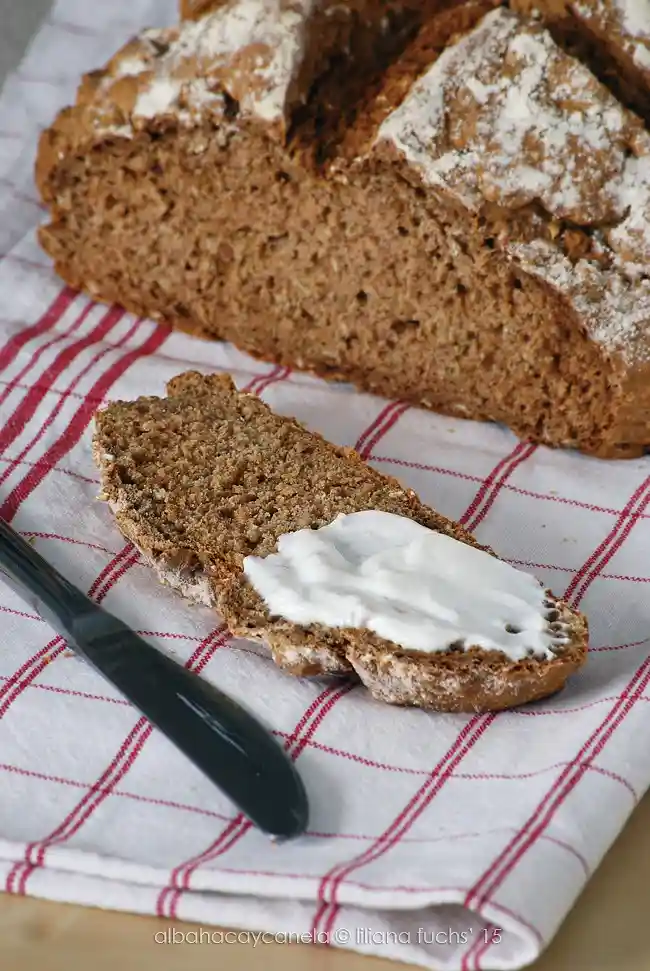Welcome to the ultimate guide on crafting the perfect buckwheat bread recipe. Whether you’re a seasoned baker or new to the kitchen, this article will guide you through the delightful world of buckwheat bread. Here’s what we’ll cover:
- The unique benefits of buckwheat.
- An overview of what makes a buckwheat bread recipe special.
- Insights into why this recipe could become your new favorite.
Buckwheat, despite its name, is not related to wheat. It is gloriously gluten-free. It’s a powerhouse of nutrients, offering high levels of protein, fiber, and essential minerals. This makes buckwheat flour an excellent choice for those on gluten-free diets or anyone looking to add nutritious grains to their meals.
Our journey into the buckwheat bread recipe will introduce you to the basics of making this delightful bread. We will also dive into the nuances that make it uniquely satisfying and nutritious. Whether you’re spreading jam on a warm slice for breakfast or using it as the base for an avant-garde sandwich, buckwheat bread is versatile and delicious.
Stay tuned as we explore the world of buckwheat bread. From its rich nutritional profile to the simple joy of baking it at home, this guide is designed to inspire both novice bakers and culinary experts. Your next loaf of buckwheat bread will be as rewarding to make as it is to eat.
The Basics of Buckwheat Bread
What is Buckwheat?
Buckwheat stands out as a unique and versatile grain. Despite its misleading name, buckwheat is not related to wheat and is a champion of gluten-free diets. It’s a plant that produces seeds resembling grains, making it a pseudo-cereal, much like quinoa or amaranth.
- Buckwheat is rich in protein, fiber, and essential minerals.
- It’s an excellent source of energy and nutrients for those on gluten-free diets.
- Buckwheat flour is the cornerstone of any buckwheat bread recipe, offering a nutritious and flavorful base.
Nutritional Profile of Buckwheat
Delving into the nutritional aspects, buckwheat is a powerhouse that significantly boosts the health benefits of a buckwheat bread recipe. For detailed insights into the benefits of whole grains, including buckwheat, the Whole Grains Council offers extensive resources.
- High in antioxidants, including rutin, quercetin, and D-chiro-inositol.
- A great source of B vitamins, magnesium, and dietary fiber.
- Contains resistant starch, which may help in managing blood sugar.
Why Buckwheat is Great for Bread
Transitioning to why buckwheat flour is an excellent choice for bread, its unique properties contribute to both the texture and nutritional value of the bread. A buckwheat bread recipe not only caters to those with gluten sensitivities but also to anyone seeking a healthier bread option.
- Gluten-Free: Perfect for individuals with celiac disease or gluten intolerance.
- Rich Flavor: Offers a distinct, earthy taste that enhances the bread’s flavor profile.
- Versatile: Works well in various recipes, from traditional loaves to artisan breads.
Differences Between Buckwheat Bread and Traditional Wheat Bread
Understanding the differences between buckwheat and traditional wheat bread can help bakers and consumers appreciate the unique qualities of a buckwheat bread recipe.
- Nutritional Value: Buckwheat bread is higher in minerals and antioxidants.
- Digestibility: Easier on the stomach for those with gluten intolerance.
- Flavor Profile: Buckwheat provides a richer, more complex taste.
In conclusion, the journey into making buckwheat bread starts with understanding the grain itself. Buckwheat’s rich nutritional profile and gluten-free nature make it an excellent choice for bread recipes. As we delve deeper into the specifics of a buckwheat bread recipe, remember that this wholesome ingredient offers more than just a gluten-free alternative. It brings a wealth of health benefits and a unique flavor that can transform your baking repertoire.
Ingredients and Substitutes
Essential Ingredients for Buckwheat Bread
A successful buckwheat bread recipe relies on a combination of key ingredients. Each plays a vital role in ensuring the bread’s texture, flavor, and nutritional value. Here are the essentials:
- Buckwheat Flour: The backbone of any buckwheat bread recipe, providing unique flavor and gluten-free properties.
- Gluten-Free All-Purpose Flour: Helps to lighten the bread’s texture, making it airier and less dense.
- Psyllium Husk Powder: Acts as a binder and adds fiber, mimicking the texture of gluten in traditional bread.
- Yeast: Essential for bread rise, contributing to the bread’s fluffiness and air pockets.
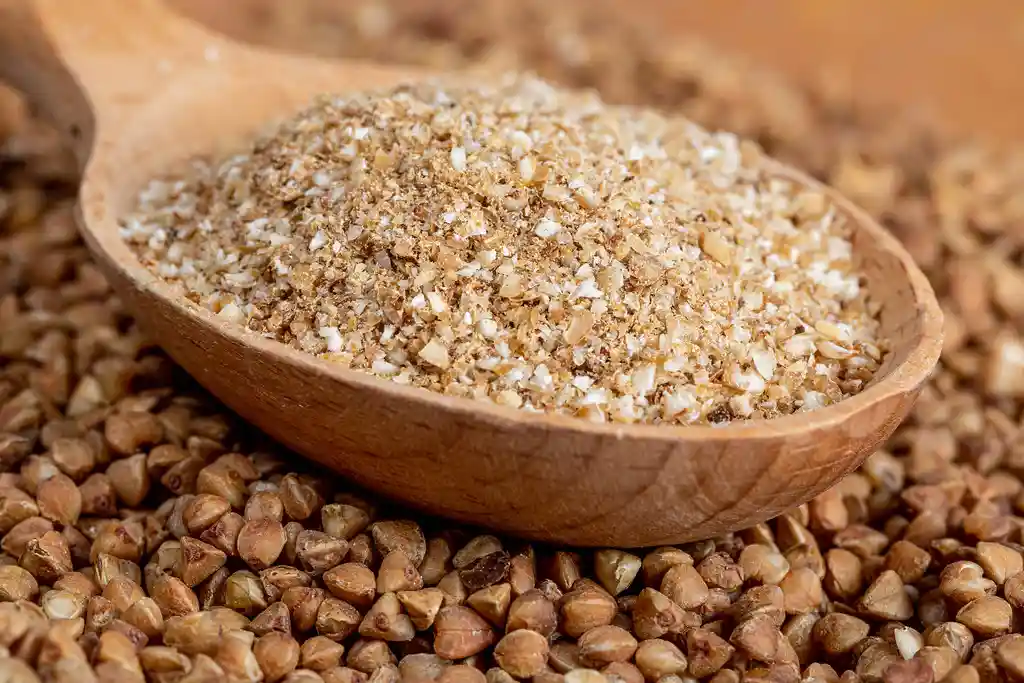
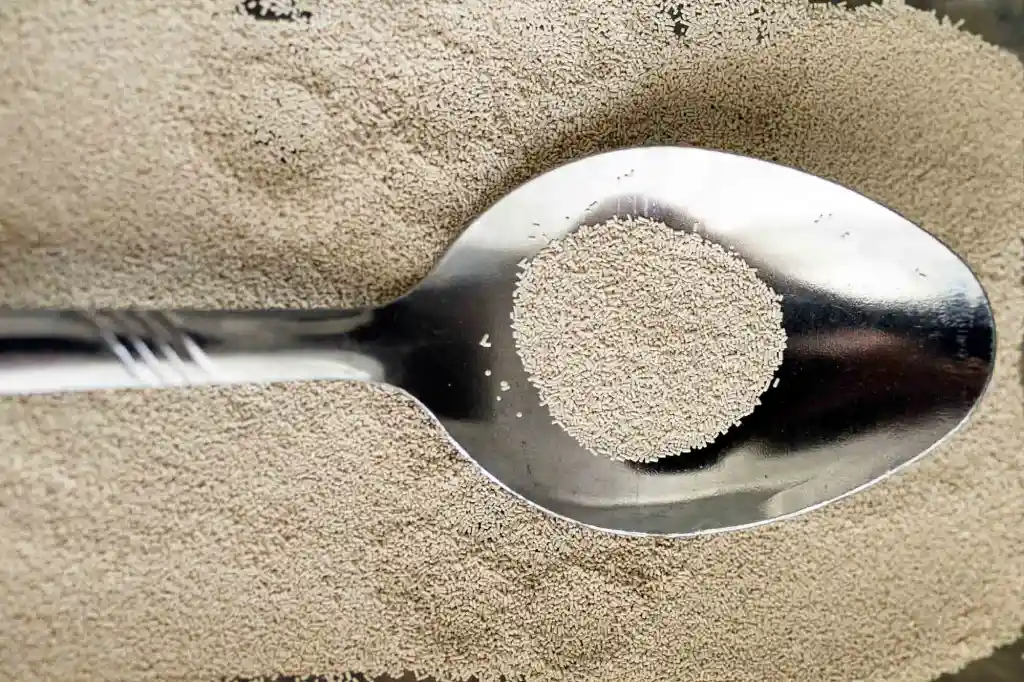
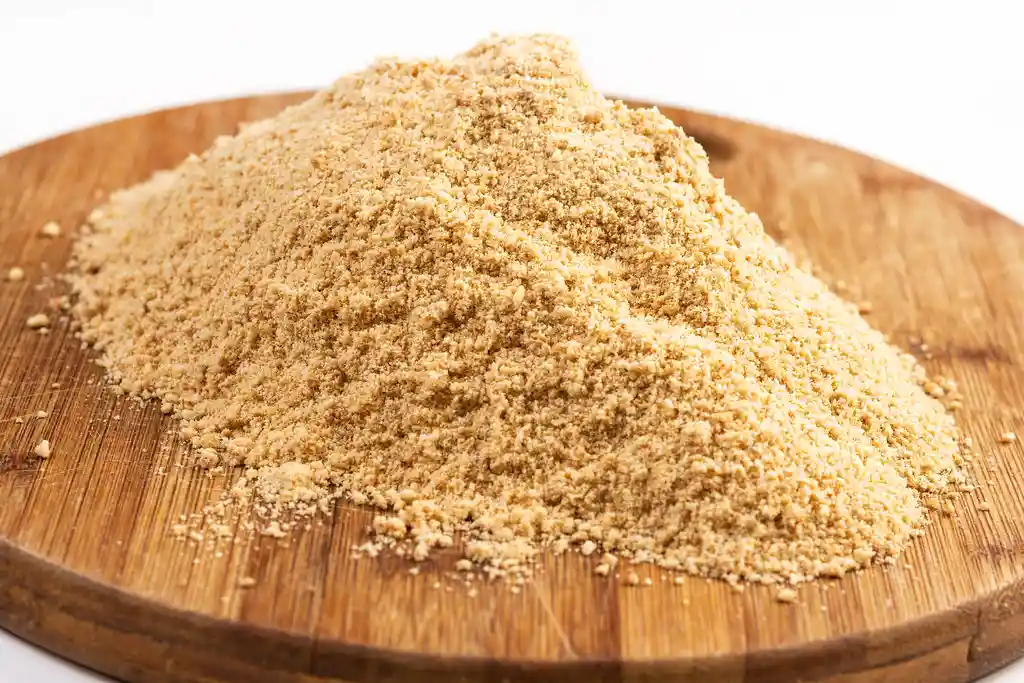
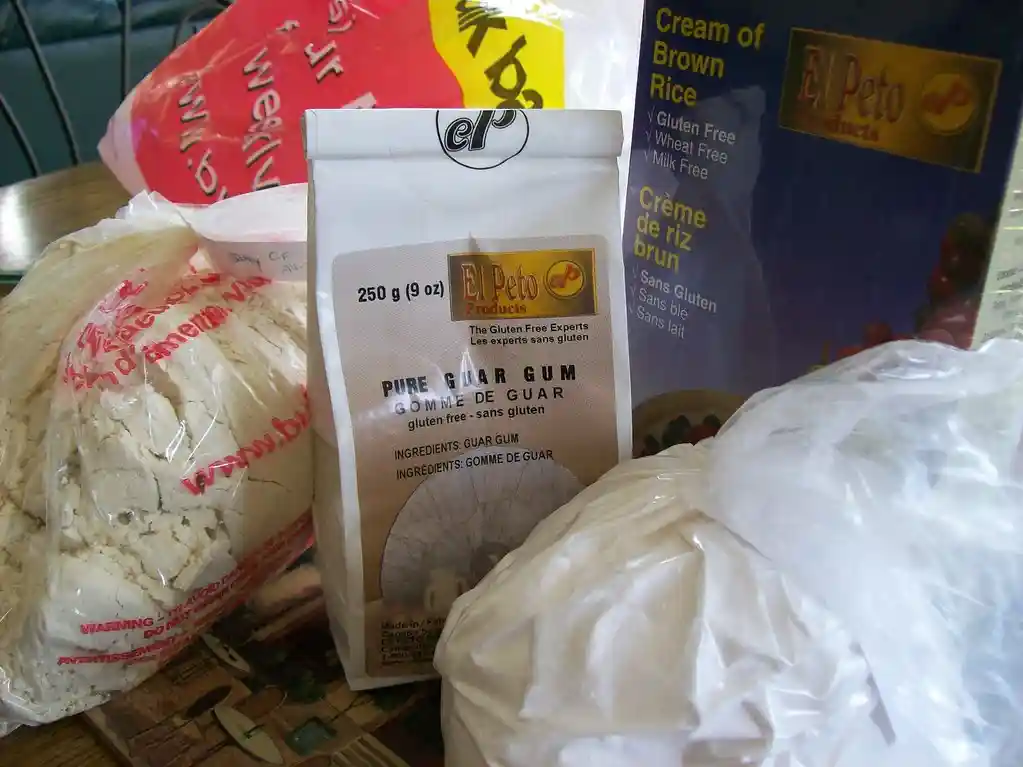
Substitutes and Variations
Flexibility is key in baking, and a buckwheat bread recipe is no exception. Whether due to dietary restrictions or personal preference, substitutes can help tailor the recipe to your needs. For those with celiac disease or gluten sensitivities, the Celiac Disease Foundation provides valuable resources on gluten-free baking.
- Flour Substitutes: Almond flour or oat flour can replace gluten-free all-purpose flour for different flavors and nutritional profiles.
- Egg Replacers: For a vegan option, flax eggs or chia eggs can substitute for regular eggs without compromising the bread’s structure.
- Dairy and Non-Dairy Options: Plant-based milks or water can be used in place of dairy milk to adjust the recipe to vegan or lactose-free diets.
Ingredient Benefits and Roles in a Buckwheat Bread Recipe
Understanding the role of each ingredient enhances the baking process, ensuring a delicious and nutritious loaf every time.
- Buckwheat Flour: Not only does it provide essential nutrients like magnesium and fiber, but it also gives the bread a distinctive taste.
- Psyllium Husk: Beyond acting as a gluten substitute, it aids in digestive health.
- Yeast: Vital for leavening, it also contributes to the bread’s nutritional content by adding a small amount of protein and various B vitamins.
In crafting the perfect loaf, the choice of ingredients in a buckwheat bread recipe is crucial. By understanding the function and potential substitutes for each component, bakers can create a bread that not only tastes great but also caters to a wide range of dietary needs. Whether you’re experimenting with different flours or seeking vegan alternatives, the possibilities are endless.
Step-by-Step Recipe
Preparing the Ingredients
Before diving into the buckwheat bread recipe, it’s crucial to prepare your ingredients. Proper preparation ensures a smooth baking process and contributes to the bread’s final quality.
- Measure Accurately: Use a kitchen scale for precise measurements, especially for the buckwheat flour and gluten-free all-purpose flour.
- Room Temperature Ingredients: Ensure that all ingredients, especially eggs and any liquid, are at room temperature to facilitate better mixing.
- Prep the Yeast: If using active dry yeast, proof it in warm water with a pinch of sugar to ensure it’s active.
Mixing and Kneading the Dough
The mixing and kneading stage is where the magic begins. For a buckwheat bread recipe, this process is slightly different from traditional wheat bread due to the absence of gluten.
- Combine Dry Ingredients: In a large bowl, whisk together the buckwheat flour, gluten-free all-purpose flour, psyllium husk powder, and salt.
- Add Wet Ingredients: Gradually incorporate the wet ingredients, including the activated yeast mixture, into the dry ingredients until a dough forms.
- Knead Gently: Since there’s no gluten to develop, mix until just combined and the dough is cohesive but sticky.
First Rise and Shaping
Allowing the dough to rise is essential for developing the bread’s structure and flavor.
- Let It Rise: Cover the dough with a damp cloth and let it rise in a warm, draft-free place until it doubles in size. This may take longer than gluten-containing doughs.
- Shape the Loaf: Once risen, gently shape the dough into a loaf without overworking it, to preserve the air bubbles formed during the rise.
Baking the Bread
Baking is the final step in bringing your buckwheat bread recipe to life. It’s where all your preparation pays off.
- Preheat the Oven: Ensure your oven is preheated to the correct temperature, typically around 350°F (175°C) for buckwheat bread.
- Bake with Steam: Place a pan of water on the bottom rack of the oven to create steam. This helps the bread’s crust develop well.
- Check for Doneness: Bake until the bread is golden brown and sounds hollow when tapped on the bottom. This usually takes about 40-50 minutes.
Cooling and Slicing Tips
Proper cooling and slicing are crucial for the best texture and taste.
- Cool on a Wire Rack: Allow the bread to cool completely on a wire rack to prevent it from becoming soggy.
- Use a Serrated Knife: For clean slices, use a serrated knife to cut through the bread without crushing it.
In conclusion, following these steps will help you create a delicious loaf of buckwheat bread. From preparing the ingredients to baking and cooling, each stage is important for achieving the perfect texture and flavor. Enjoy the process and the delightful results of your homemade buckwheat bread.
FAQs
Is buckwheat flour good for baking bread?
Yes, buckwheat flour is excellent for baking bread. It offers a robust, earthy flavor and a nutritious profile that enriches the bread with minerals and vitamins. While it creates a different texture than traditional wheat flour due to its lack of gluten, buckwheat flour makes bread that is both delicious and wholesome.
- Rich in nutrients like magnesium, fiber, and protein
- Gluten-free, making it suitable for those with gluten sensitivities
- Adds a unique, earthy flavor to the bread
Is there a bread made from buckwheat?
Absolutely, bread made from buckwheat is not only possible but also popular among those seeking gluten-free options or wanting to diversify their bread consumption. A buckwheat bread recipe typically combines buckwheat flour with other gluten-free flours to achieve a pleasant texture and flavor.
- Ideal for gluten-free diets
- Can be combined with other flours for varied textures
- Offers a nutritious alternative to traditional wheat bread
What are the pros and cons of buckwheat flour?
Using buckwheat flour in baking comes with its set of advantages and challenges.
Pros:
- High in dietary fiber and essential nutrients
- Gluten-free, perfect for sensitive diets
- Adds a distinct, rich flavor to baked goods
Cons:
- Lack of gluten can result in a denser texture, requiring adjustments or mixtures with other flours
- Its strong flavor might not suit all tastes
- Can be more expensive than traditional wheat flour
Does buckwheat bread contain yeast?
Yes, most buckwheat bread recipes include yeast to help the bread rise and develop a light, airy texture. However, for those avoiding yeast, there are yeast-free buckwheat bread options that rely on baking powder or baking soda as leavening agents.
- Yeast-based recipes create a traditional bread texture
- Yeast-free options are available for those with dietary restrictions
- Leavening agents are crucial for achieving the desired bread rise
In summary, buckwheat flour is a versatile and nutritious option for baking bread, offering benefits for those on gluten-free diets or looking to add variety to their baking. While it has its unique characteristics and challenges, the results can be incredibly rewarding, producing bread that is both flavorful and healthful.
Tips and Tricks for Perfect Buckwheat Bread
Achieving the Perfect Texture
The texture of your buckwheat bread can make or break the overall experience. Achieving that ideal crumb requires attention to detail and a few key techniques:
- Ensure Proper Hydration: The water content in your dough is crucial. Buckwheat flour absorbs more liquid than wheat flour, so adjust accordingly.
- Mix Thoroughly: To avoid a gritty texture, mix your dry and wet ingredients thoroughly until you achieve a consistent batter.
- Let the Dough Rest: Allowing your dough to rest before baking can help the flours fully hydrate, leading to a better texture.
Flavor Enhancements
While buckwheat has a distinct flavor, there are ways to enhance your buckwheat bread recipe for an even more delightful taste.
- Incorporate Nuts and Seeds: Adding nuts or seeds can introduce a pleasant crunch and nutritional boost.
- Experiment with Sweeteners: Honey, maple syrup, or agave can add subtle sweetness and depth of flavor.
- For more ideas on enhancing your vegan baking, the Vegan Society offers a wealth of resources.
Troubleshooting Common Issues
Even experienced bakers run into issues now and then. Here are solutions to common problems in buckwheat bread baking:
- Dense Bread: If your bread is too dense, consider adding more leavening agent or ensuring your yeast is fresh and active.
- Dry Bread: Increase the moisture in your recipe with more liquid or by incorporating ingredients like applesauce or yogurt.
- Crumbly Bread: A lack of binders like xanthan gum or psyllium husk can lead to crumbly bread. Ensure you’ve added enough to your mix.
Storing and Freezing Baked Goods
Proper storage is key to maintaining the freshness and flavor of your buckwheat bread. For comprehensive tips on storing and freezing your baked goods, including buckwheat bread, explore dedicated resources on the topic.
- Cool Completely Before Storing: To avoid condensation and sogginess, let your bread cool completely.
- Airtight Containers: Store your bread in airtight containers to keep it fresh longer.
- Freezing: For long-term storage, wrap your bread tightly in plastic wrap and then foil before freezing.
In conclusion, mastering a buckwheat bread recipe involves more than just following the steps. It’s about understanding the ingredients, experimenting with flavors, and learning from each baking experience. With these tips and tricks, you’re well on your way to baking delicious, nutritious buckwheat bread that everyone will love.
Conclusion
Baking buckwheat bread is an adventure that combines nutrition, flavor, and the joy of homemade bread. As we’ve explored, this versatile grain offers a world of possibilities for both novice and experienced bakers. Here are the key takeaways:
- Buckwheat flour is a powerhouse of nutrients, making it an excellent choice for health-conscious individuals.
- A successful buckwheat bread recipe balances the right mix of ingredients for both flavor and texture.
- Experimentation and personalization are key. Feel free to adjust recipes to suit your taste preferences and dietary needs.
- Proper storage techniques ensure your bread stays fresh and delicious for as long as possible.
In summary, whether you’re seeking a gluten-free option or simply want to diversify your baking repertoire, buckwheat bread offers a satisfying and healthy alternative to traditional wheat bread. With the tips and insights provided, you’re now equipped to embark on your own buckwheat bread baking journey. Enjoy the process and the delightful results of your efforts. Happy baking!

